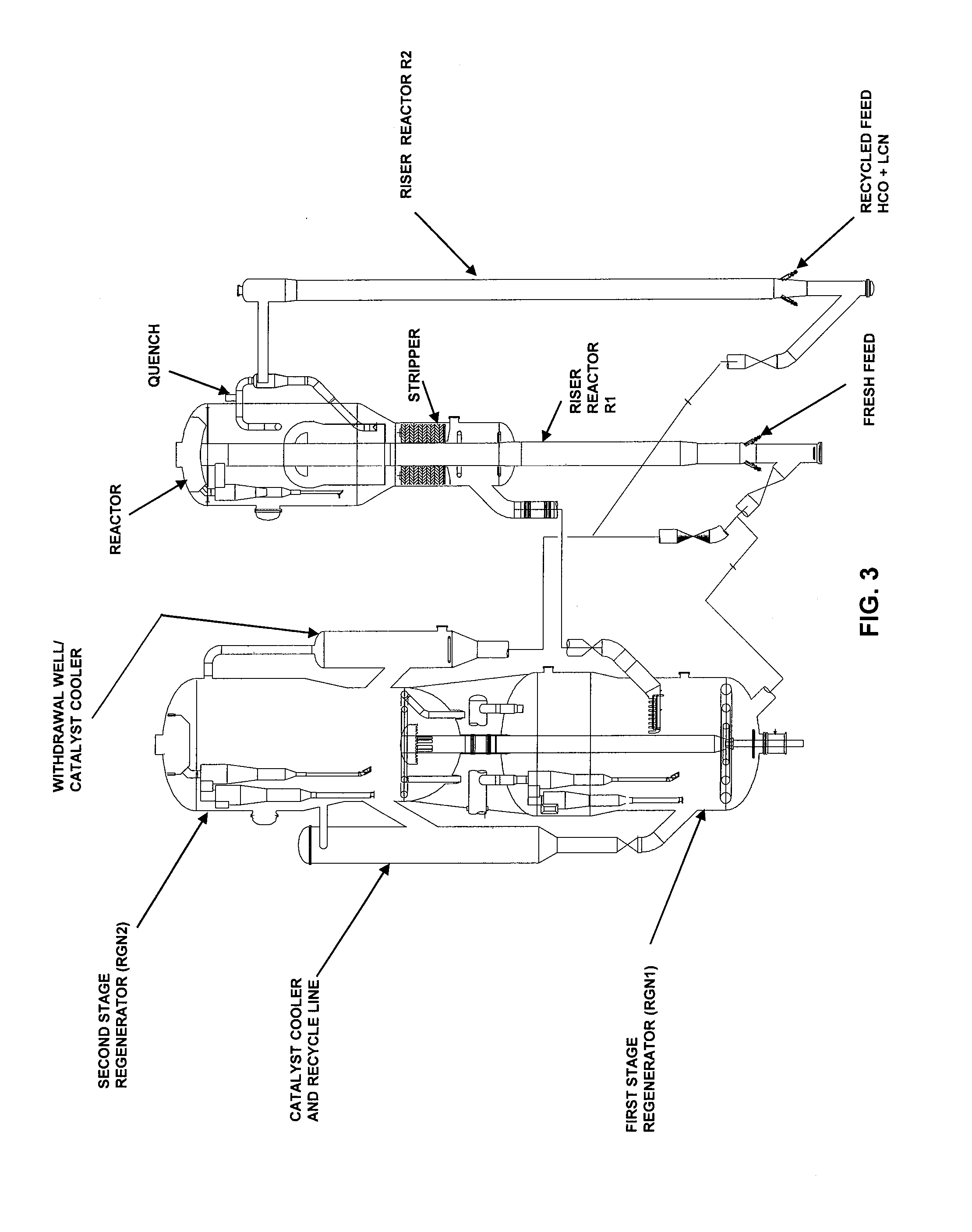Process for maximum distillate production from fluid catalytic cracking units (FCCU)
a technology of fluid catalytic cracking unit and distillate, which is applied in the direction of hydrocarbon oil treatment products, physical/chemical process catalysts, metal/metal-oxide/metal-hydroxide catalysts, etc., can solve the problem of reducing the catalyst-to-oil ratio or restricting the riser cracking outlet temperature, reducing the catalytic activity rate, and impairing feed vaporization. , to achieve the effect of reducing the average cr
- Summary
- Abstract
- Description
- Claims
- Application Information
AI Technical Summary
Benefits of technology
Problems solved by technology
Method used
Image
Examples
Embodiment Construction
[0041]In accordance with the present invention, an improved hydrocarbon cracking system for maximizing middle distillate production is provided, the system comprising, a single multistage-stage catalyst regeneration unit that provides partially-regenerated catalyst and / or fully-regenerated catalyst to a first riser reactor for receiving a hydrocarbon feed and a second riser reactor for receiving a recycled feed. The partially-regenerated catalyst and the fully-regenerated catalyst have a different MAT activity, due to different CRC levels.
[0042]The invention contemplates a catalytic cracking process designed to maximize middle distillate production from hydrocarbon feedstocks. In the following text, middle distillate will be referred as light cycle oil (LCO), which is a hydrocarbon cut having a boiling range from about 302° F. to about 716° F. As best understood by one skilled in the art, this boiling range may vary to some extent from one refinery to another depending on, for examp...
PUM
| Property | Measurement | Unit |
|---|---|---|
| Temperature | aaaaa | aaaaa |
| Temperature | aaaaa | aaaaa |
| Temperature | aaaaa | aaaaa |
Abstract
Description
Claims
Application Information
 Login to View More
Login to View More - R&D
- Intellectual Property
- Life Sciences
- Materials
- Tech Scout
- Unparalleled Data Quality
- Higher Quality Content
- 60% Fewer Hallucinations
Browse by: Latest US Patents, China's latest patents, Technical Efficacy Thesaurus, Application Domain, Technology Topic, Popular Technical Reports.
© 2025 PatSnap. All rights reserved.Legal|Privacy policy|Modern Slavery Act Transparency Statement|Sitemap|About US| Contact US: help@patsnap.com



